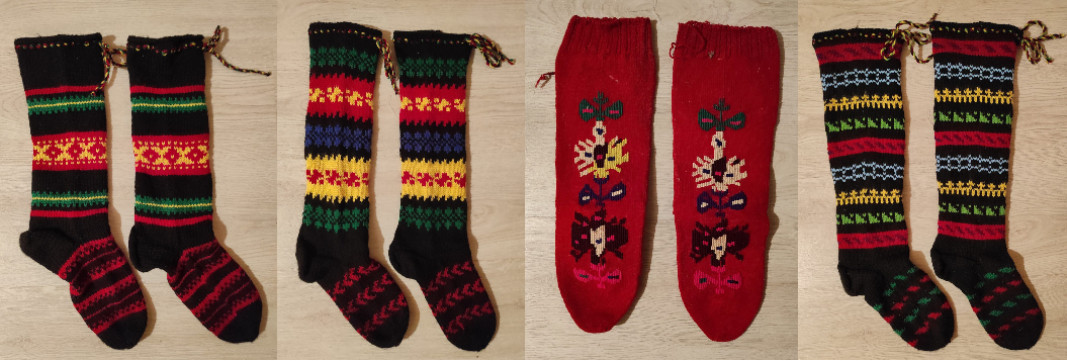Community centers, individual participants and clubs from 62 towns in Bulgaria participated in the online "Colorful Socks" contest, organized on the occasion of 100 years since the establishment of "Kruger Nikolov - 1922" Community Center in Peshtera village near Pernik, western Bulgaria. Organizers aimed at presenting authentic socks from all over the country.
Out of the huge wealth of elements of the traditional costume, socks were chosen not by chance. They are a colorful part of the folk costume with encoded symbolism, also seen in Bulgarian embroidery. What are the characteristics of socks from the different folklore regions of Bulgaria?

"In the rich collection of photos that was sent to me, it can be seen that floral motifs predominate. These are mainly roses and geometrical figures,” Stoyan Stoyanov, secretary of the community center says. "There are other patterns that also impressed me - socks with beads, with huge intertwined motifs of geometric shapes, with embroidered butterflies, animals and plants."
The oldest pair of socks shown in the contest comes from the village of Alino, Sofia region. They are 120 years old. The patterns, motifs and colors are impressive with their diversity. Most of the photos sent are of socks used during festive occasions.

"These are socks that were used during weddings and fairs and that is why people preserved them. The ordinary everyday socks were most often black for women and white for young men,” Mr. Stoyanov says.
Over the years, the patterns have been preserved, but the colors changed. In addition to wool, socks made of other fabrics are also present. Actually, colors in which wool was dyed in the past become brighter. The sense of aesthetics allowed the Bulgarian woman to skillfully combine the socks with the other parts of the traditional clothing.
"The socks suited the whole costume, because harmony is important. You can't wear a costume in red, but have socks in yellow or another color, for example” Mr. Stoyanov says. "There was a harmony between the color of the costume and the color of the socks, but it was strictly individual."

Stoyan Stoyanov hopes that the contest will become an annual event so that people can find and show more impressive samples. He also has a rich collection of socks from his native village. What is the information encoded in them, as part of traditional clothing?
"There are several types of socks in the village of Peshtera. One of the types is presented as a gift from mother to daughter for the time when the lass would become a bride, as a symbol of fertility. The other type has floral patterns on it. The mother-in-law gives them to her daughter-in-law during the wedding. The third type are colorful socks with the colors of the rainbow, while the fourth type are mainly red, with embroidered flowers and animals. They encode purification from evil, so that the woman can wear them for health and luck."
You can see the uniqueness of traditional Bulgarian socks HERE
English: Alexander Markov
Photos: private libraryAccording to popular belief, the color red has the power of the sun and gives vitality to every living being, while white symbolizes purity, innocence and joy . The appearance of the twisted white and red threads, known as martenitsa, means that winter..
The Philip Koutev National School of Folk Arts is not just any school - it is a talent laboratory. It is the first school not only in Bulgaria but in the Balkans for professional study of folklore. It is located in the heart of the beautiful town of..
Scientists from the Sorbonne will study the cultural heritage preserved in the Regional Ethnographic Open-Air Museum "Etar" , informs public broadcaster BNT. In March this year the French scientists together with experts of REOM "Etar" will study elements..

+359 2 9336 661
